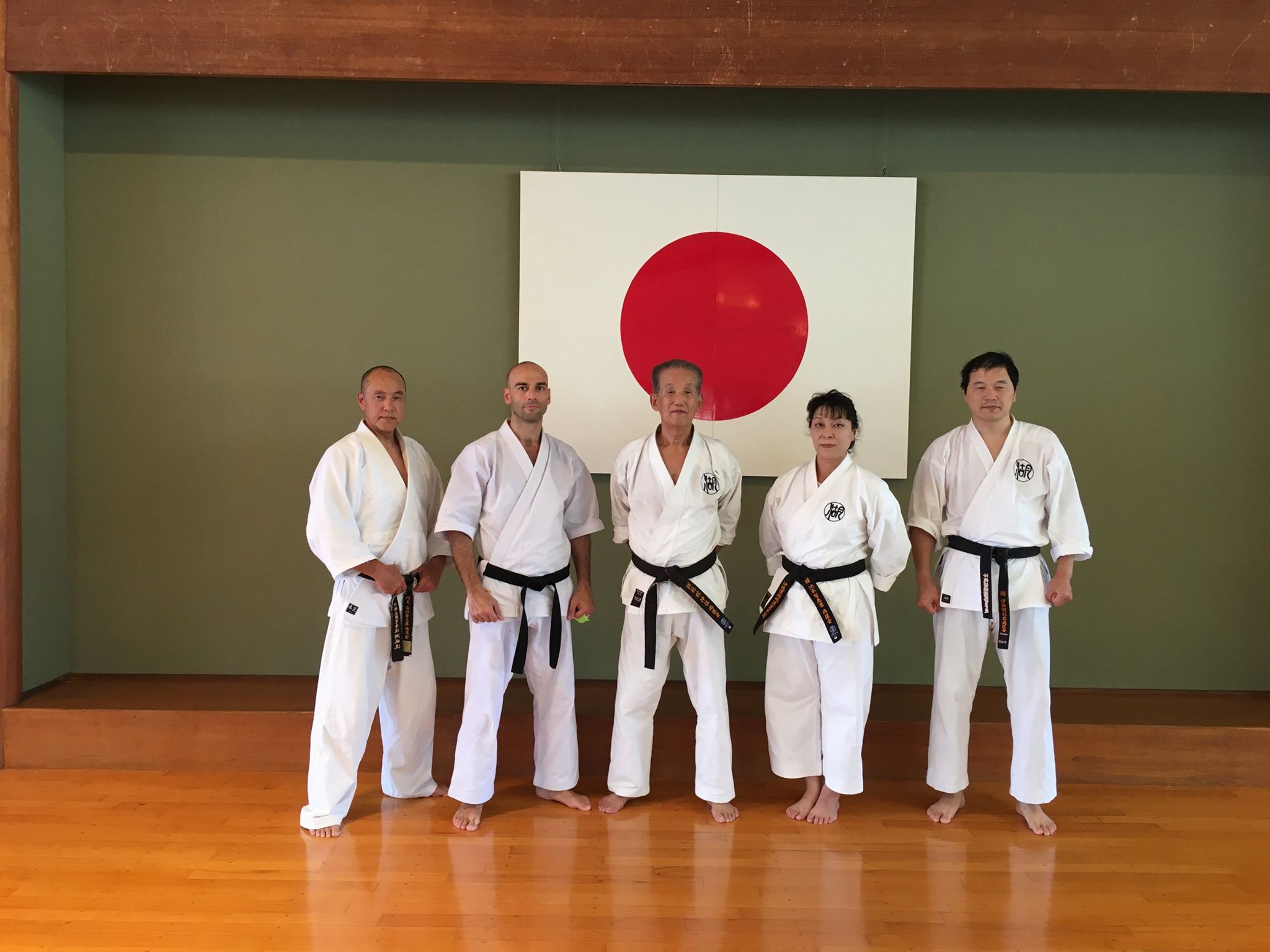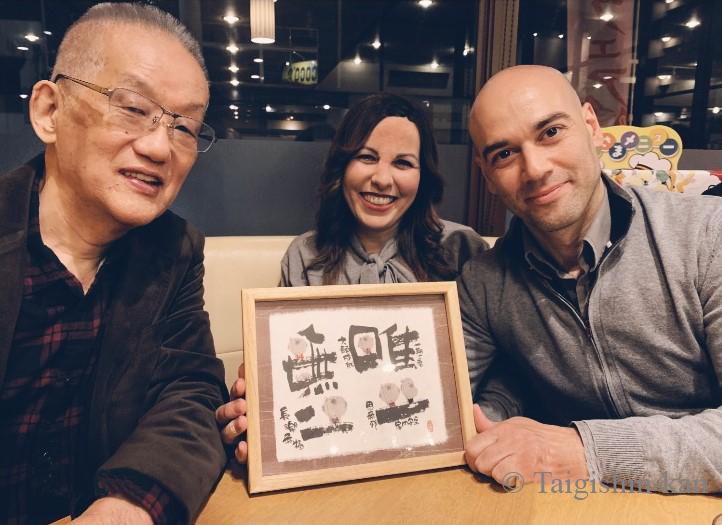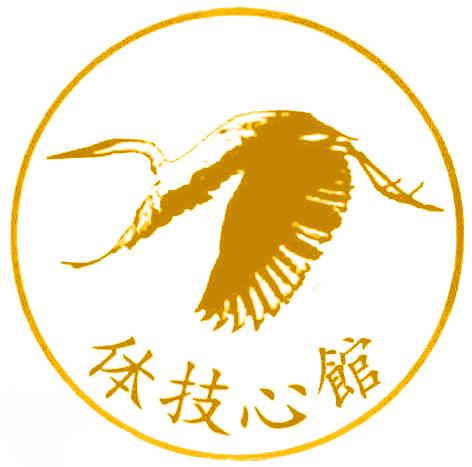KOJO-RYU KARATE
the famous ghost style of Okinawa
Kojoryu is probably the oldest codified karate style in existence, and it's the core of the Koyamaryu Taigishinkan system. It is known to have influenced many other traditional Okinawan karate systems. With roots that date back 300 years ago in the Chinese chuan-fa (old Shinzanryu), according to the masters currently active, it was handed down in secret, only within the members of the Kojo family of Okinawa, until the 70s. (becoming Kojoryu). Although it is an ancient style of karate, it has always been considered, by the few people who have actually studied it, a system of bujutsu in its own right, with unique and complex characteristics.
It's a system extremely combative that includes hollow hand techniques and weapon techniques; it is rich in atemi-waza, shime-waza and nage-waza which come from the experience matured over time of various systems such as Xingyi-quan, Luohan-quan, Hakutsuru-ken, Uchina-di and even Japanese Jujutsu.
Is considered as method of bujutsu, it incorporates many kata from various methods of Chinese chuan-fa and the Okinawan methods of Shurite, Nahate and Kuninda-di, which is the original method of the village of Kume where the ancestors of the Kojo family resided. If considered as a style of karate proper, it consists of 6 unique family kata, i.e. not present in any other style of karate, which are Tenkan, Kukan, Chikan, Hakko, Hakuryu and Hakkaku. The first three kata include the typical 12 kamae-te of the Chinese zodiac, which have particular technical applications for combat.
HISTORICAL PILLS
CAI ZAOGONG (also CAI ZONGHUI, in Okinawa called Kojo Uekata - 1656/1737 or 1665/1747)
Bingfa, Caijia-quan, Poetry, Calligraphy
KOJO PECHIN SHINPO (Chinese name and birthday unknown, probably death 1826)
Bingfa, Caijia-quan, Calligraphy
NEXT LINEAGE
KOJO SHINUNJO (also CAI SHICHANG, called Nmari Bushi - 1780/1860)
Bingfa, Caijia-quan, Sakugawa Tode
KOJO SHOI (also CAI CHANGWEI - 1816/1906)
Caijia-quan, Fujian quanfa, Bojutsu
KOJO ISEI and KOJO TATEI (1832/1891 - 1837/1917)
Caijia-quan, Fujian quanfa, Uchinadi,
Tatei started to use the name Shinzanryu karate
KOJO KAHO (1849/1925)
Shinzanryu, Fujian quanfa, Uchinadi
KOJO SAIKYO and KOJO SHUREN (1873/1941 - 1883/1945)
Shinzanryu, Okinawa Sumo, Ryukyu Kobudo, Nahate
 Kojo Kafu and his son Shigeru
Kojo Kafu and his son Shigeru
KOJO KAFU (also Yoshitomi Kojo 1910/1996) was the first school leader to use the name Kojoryu. He learned the family system from his grandfather, father and uncle. Later he also trained in other methods such as Sekiguchiryu jujutsu, Jukendo and Shorinryu karate of which he became an expert, receiving instructions from Chomo Hanashiro and his friend Choshin Chibana. In the 1960s he decided to start teaching publicly, for the first time, by opening a dojo in Naha with his son SHIGERU (1934/1993); so he changed the name of the family system from Shinzanryu karate to Shinzanryu • Shorinryu karate, but in '67 he definitely changed it to Kojoryu. He had about a dozen students outside the family, including Shingo Hayashi and Seiji Irimaji (the latter teacher of Takaya Yabiku).
HAYASHI SHINGO (1934) is the moral heir of Kafu Kojo, as the last and most trusted student and the only one who was authorized by K. Kojo to open a dojo in Japan. He began learning Kojoryu in 1963 in Okinawa where he worked as a dentist, over the years he also studied judo and kendo. Hayashi Sensei lives in Japan (mainland) and continued the study of Kojoryu by often inviting Kafu Kojo, who in the meantime authorized him to open a Shibu dojo there to represent his school. Hayashi Sensei is called "kakuri bushi" by the martial community, or "hidden warrior", thanks to his mild, sincere and absolutely faithful to the teachings of his master, practicing karate not for business, so much so that after Kafu's departure Kojo, decided not to teach publicly anymore and now he does so only to his three uchi-deshi and sporadically to the few visitors who ask him to visit him, without ever joining any organization.
YABIKU TAKAYA (1944) was unique uchi-deshi by Seiji Irimaji (read note), after starting the practice of Hakutsuru-ken in 1965 under the Kojo for about a year and a half, thanks to Shigeru and Tatsumi Kojo (another son of Kafu) who worked in the same taxi rank as Yabiku. Later he passed under the training of Irimaji, continuing for twenty-four years until Irimaji promoted him to 10th dan and successor of his own school called Shinzanryu Koshinkan. Yabiku had previously obtained 7th dan Kyoshi certification during an exam supervised by Kafu Kojo himself. Yabiku Sensei is famous for having also studied other styles of karate and in particular for having been a student of Hohan Soken of Matsumura Seito Shorinryu; he also has teaching licenses in Pangainoon / Konanryu, Chibana-ha Shorinryu and to be an expert in the White Crane method which he has also studied in Taiwan.
NOTE
- It's known that Angelo Bonanno was the only Italian student of Takaya Yabiku Sensei (until now), and he's currently the only Italian student of Shingo Hayashi Sensei
- The Taigishinkan has no connection with the American and Australian associations, and Filipino too, that claim to practice the authentic Kojoryu Koshinkan or Matsusokan (see below), nor with their Shibu-cho
- It is reported that some schools claim to practice Kojoryu as transmitted by Takaya Yabiku in an authentic way, and that their teachers have teaching licenses issued by Sensei himself. As verifiable by historical facts and technical details, all confirmed to Prof. Bonanno by Yabiku Sensei during his travels to Okinawa and in correspondence in the possession of Prof. Bonanno himself, as well as as reported in his technical manual published in 2020 at the request of Yabiku sensei himself (Shinzanryu Karate - Introduction to the oldest Ryukyu karate, Ed. Youcanprint), these schools and their teachers practice Koshinryu and not Kojoryu. Koshinryu, in fact, is the karate line founded by Seiji Irimaji when he decided to break away from the school of his teacher Kafu Kojo to open his own school called Koshinryu Koshinkan, and he modified the original kata by expanding the syllabus with forms invented by himself. It is well known that Kafu Kojo did not look favorably upon this decision of Irimaji Sensei. Irimaji Sensei after having already left his Koshinkan in Yabiku Sensei's hands, first due to work reasons and then health, decided only in 2013 to abandon the transmission of Koshinryu urging Yabiku to transmit the authentic Kojoryu only to trusted people, calling him however Shinzanryu (ie with the ancient name).
Therefore, Koshinryu is not the authentic Kojoryu, its kata are not the original ones of the family method, and anyone who claims to practice the original Kojo family style can be considered a braggart. The authentic Kojoryu as transmitted by Kafu Kojo to Seiji Irimaji and from these to Takaya Yabiku (before the changes) is known by only two people: Ron Goninan, longtime student of T. Yabiku, and Angelo Bonanno.
 Hayashi Sensei and the only Kojoryu Shibu authorized by Kafu Kojo
Hayashi Sensei and the only Kojoryu Shibu authorized by Kafu Kojo


